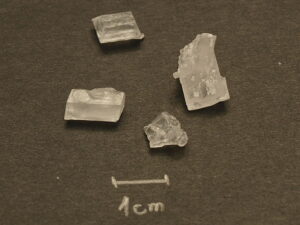Table of Contents
The inorganic compound sodium thiosulfate (sodium thiosulphate) has a formula Na2S2O3.5H2O. In its solid-state, it is indeed a crystalline solid that readily loses water. Sodium thiosulfate, as well known as sodium hyposulfite, is really a water-soluble salt.
The thiosulfate ion does have a tetrahedral shape. Here, the thiosulfate ion’s distance between two sulphur atoms is comparable to the distance between two sigma bonded sulphur atoms. It thus means that the sulphur that isn’t bonded to any oxygens has a negative charge.

Physical Properties of Sodium Thiosulfate
- Sodium thiosulfate does have a molar mass of 158.11 grammes per mole in its anhydrous form. The molar mass of the more commonly available pentahydrate from, Na2S2O3.5H2O, is 248.18 g/mol.
- As a solid, it does have a white, crystalline appearance and is odourless.
- Sodium thiosulfate really does have a density of 1.667 grammes per cubic centimetre.
- The pentahydrate of such a salt has a melting point of 321.4 K and a boiling point of 373 K.
- At 20oC, sodium thiosulfate dissolves in water at a rate of 70.1g/100 mL and at 100oC, it dissolves at a rate of 231g/100 mL.
- Na2S2O3 crystals have a monoclinic crystal structure.
Chemical Properties of Sodium Thiosulfate
- The sodium thiosulfate salt seems to have no charge. Even so, in water and some other polar solvents, it dissociates to give Na+and S2O32-.
- But besides being stable at room temperature, the sodium thiosulfate salt decomposes at high temperatures to produce sodium sulphate and sodium polysulfide.
4Na2S2O3 ⟶ 3Na2SO4 + Na2S5
- Once exposed to dilute acids such as dilute hydrochloric acid, the sodium thiosulfate salt decomposes to produce sulphur and sulphur dioxide.
Na2S2O3 + 2HCl ⟶ 2NaCl + SO2 + H2O + S
- S-alkyl thiosulfates are produced by the alkylation of Na2S2O3. Bunte salts are the common name for these compounds.
Production of Sodium Thiosulfate
The sodium thiosulfate salt has been created in the laboratory by heating aqueous sodium sulfite solutions with sulphur.
The boiling of aqueous NaOH (sodium hydroxide) with sulphur can also result in the production of Na2S2O3.
6NaOH + 4S ⟶ Na2S2O3 + 2Na2S + H2O
Sodium thiosulfate has been manufactured in the industrial sector from the liquid waste generated during the production of sulphur dye.
Uses of Sodium Thiosulfate
- In the medical treatment of cyanide poisoning, Na2S2O3 is indeed a critical chemical compound.
- Medically, sodium thiosulfate is used to treat dermatophytosis (ringworm) and tinea versicolor.
- Na2S2O3 is being used to treat the side effects of chemotherapy and hemodialysis (blood purification).
- It is indeed a crucial compound in analytical chemistry because it stoichiometrically reacts with iodine to reduce it to the iodide ion while oxidising it to the S4O62- (tetrathionate) ion.
- Because of the ability of the thiosulfate ions to react with the silver halides that comprise photographic emulsions, sodium thiosulfate salts are used as photographic fixers.
FAQs
Define the solubility of sodium thiosulphate.
Sodium thiosulphate is really a colourless monoclinic crystal or a crystalline white powder that is salty and odourless. It has a relative density of 1.667. It is water-soluble. It does have a solubility of 231 g/100 ml of vapour at 100° C and it is insoluble in alcoholic beverages.
How does sodium thiosulphate react with hydrochloric acid?
Once sodium thiosulphate is reacted with dilute hydrochloric acid, the product is sulphur dioxide, water, and sulphur.






